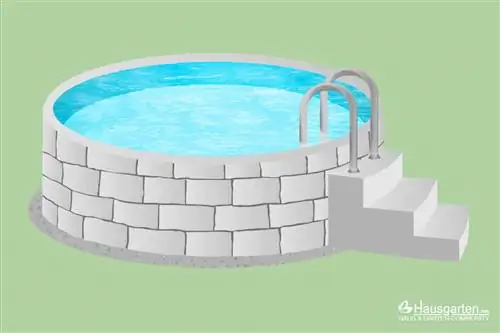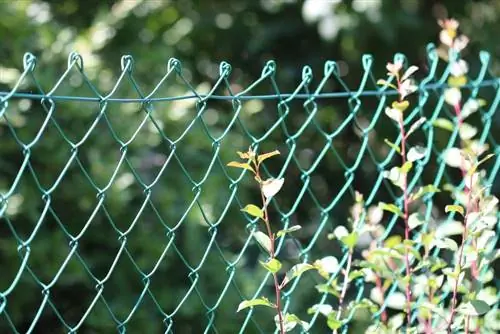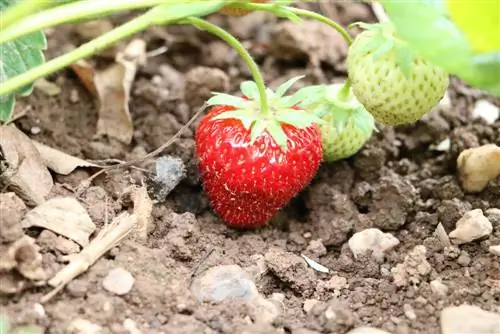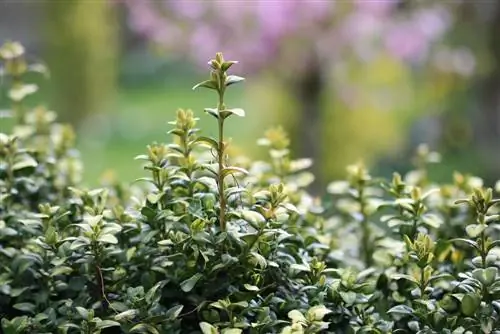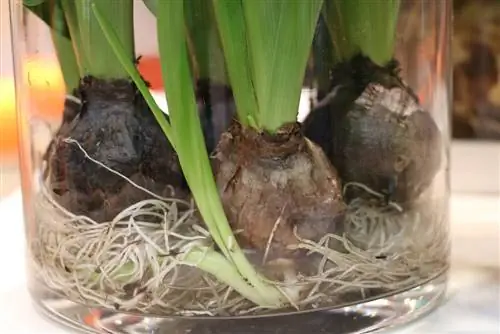- Author admin [email protected].
- Public 2023-12-17 03:39.
- Last modified 2025-01-24 12:45.
More and more people want to grow their own vegetables in their own garden. This also includes onions, because without these vegetables almost nothing works. At the beginning some things may sound a little complicated, but it's not complicated if a few things are taken into account.
Important preparatory work in autumn:
- Removing weeds from the soil
- Dig up and loosen the soil
- Check soil acidity
- If the soil is too acidic, mix in lime
- Incorporate compost as fertilizer
The soil should be prepared early
If you want to plant onion sets in spring, you should prepare the soil in autumn. To do this, remove the weeds and loosen the soil. Compost should be mixed in so that the soil can recover properly over the winter. If the soil is too acidic, lime should also be incorporated. Many people don't know the nature of the soil, but you can buy test strips for this in various hardware stores. This makes it possible to determine what condition the soil has and how it can be optimized. Otherwise problems can arise, and not just with onions. Otherwise, the onion sets do not have any special requirements and can thrive both in partial shade and in the sun.
Please note when sowing and caring for:
- Sow seeds early in the year
- Sufficient distance is very important
- Simply move plants that are too close
- Regularly loosen the soil and remove weeds
- Regular watering is very important, but be careful not to get waterlogged
Sowing early in the year
If you take seeds, you should start sowing at the beginning of the year. Onions and especially the seeds are tough and can germinate even in cold weather. Therefore, sowing must be completed by March, although the sooner the better. To do this, the seeds are distributed thinly in rows. Then cover this with soil. This was all work for now and now you just have to wait. After about two months the first cuttings will appear. These require a space of approximately 20 cm. If these are not far enough apart, the cuttings must be spaced further apart. If this is too complicated or too early in the year for you, you can also buy onion sets from specialist retailers. These are then simply finished in the spring.
Watering and caring for bulbs
The only effort that onions require is to water them regularly and remove the weeds. The soil should also be loosened up again and again; the best way to do this is of course to remove the weeds. Fertilization is not necessary as the soil has already been sufficiently prepared beforehand. When watering, care must be taken to ensure that waterlogging does not occur. These plants cannot tolerate these at all and can then quickly rot. Otherwise, nothing needs to be done with onions. With these little tasks, the onions will grow splendidly.
Fight pests easily and naturally:
- Mixed culture with carrots repel flies
- Marigolds and marigolds keep fungi away
- Do not plant legumes and potatoes next to onions
Mixed culture repels pests
The common onion fly is found in the best gardens and then attacks the onions. These can be held off with an onion net, or simply plant carrots next to the onions. Onion flies like the smell of carrot weed and carrot flies don't like the smell of onion weed. So the gardener literally killed two birds with one stone and got delicious vegetables at the same time. But beetroot and lettuce can also be planted together with onions and pests avoid these beds. However, neither potatoes nor legumes should be planted directly next to an onion bed as they do not get along well. For a beautiful look and against fungal diseases, marigolds or marigolds can also be planted.
Harvest time in summer or autumn
The onions are usually harvested at the end of September. This can vary depending on the variety, so these need to be monitored closely. If the onion starts to change color, the harvest can be harvested. It is best to use small onions straight away as they cannot be stored. Store the other onions in a box in a dark, cool room. However, the cellar must not be damp, otherwise they will rot. If you don't have such a cellar, you can leave the onions to overwinter outdoors. These are insensitive to cold, but should be covered against snow. Spruce branches are particularly suitable for this. This means that onions can survive the winter easily and without problems even outdoors and still taste good.
Onions can grow anywhere
Many people simply don't have a garden, but would like to plant onions on the balcony. This is also possible, but the plants also need enough space in a pot. The same distance applies here as in the garden. If you have a small balcony, you can use an elongated plant pot. Of course, the onions must also be supplied with sufficient water here. Then they grow effortlessly on a balcony. Of course, if you have more space, you can plant several pots and therefore harvest more onions.
A lot of preparatory work that is rewarded
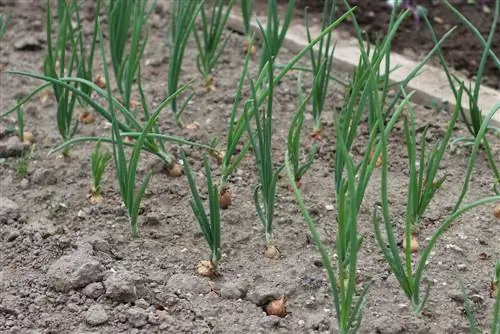
Although the onion requires a lot of preparatory work, once planted it is pretty easy. This means that beginners in particular get along particularly well with it, because everyone can meet the few requirements. Fresh, delicious onions forever.
What you need to know about onions
The onion is one of the oldest cultivated plants and has its origins in Central Asian regions.
It has been highly valued by connoisseurs and also by physicians for over 5,000 years; At the time, it even served as a means of payment for the ancient Egyptians, as a staple food for the Romans and as an offering to the gods.
The onion had an important function, especially during the plague: people wore the bulb as a kind of amulet to protect themselves from possible infection with the deadly disease.
What you need to know about onion sets
Onion sets are set as onion sets about two to three centimeters in size, which have already been sown the year before and preserved in nurseries or specialist retailers using special processes.
It is also worth knowing that an onion set itself is not edible; Only the onions grown from them are edible and therefore suitable for consumption. A particularly popular variety of onion sets is the Stuttgart giant. It is a flat-round, very firm type of onion that is characterized by a mild, spicy heat.
There are enough reasons for many housewives and amateur gardeners to prefer to buy onion sets of this genus in the supermarket or plant center so that they can “grow” them in their own garden as soon as possible.
A helpful tip from grandmother's guide to enable the freshly planted onion sets to grow more quickly is to "water" them in boiled water or soak them in shallow rainwater the day before planting. This means that the small onion sets can fill up more quickly and therefore grow better.
What do onion sets need
Which locations are best for planting onion sets? Loose, humus-rich soils are ideal for this purpose. It is interesting that onion sets can also thrive on old fertilized soil in a dry location.
If the soil is occasionally enriched with fertilizer containing phosphorus and potassium, this not only improves the quality of the later vegetables or onions, but they also generally stay fresh longer. In general, Stuttgart giants are much more durable and storable than other types of onion sets.
However, you should avoid exposing the onion sets in the bed to excessive sunlight. Because this would cause the planting material to dry out or be unnecessarily “stressed”.
In this context, it is also important to press the onion sets into the ground to a depth of about eight to ten centimeters in order to prevent birds and other small animals from feasting on them sooner or later.
Although it is advisable to press the onion sets as firmly as possible, the onion head should only be covered with a little soil. According to gardening experts, it is advisable to carefully place onion sets next to each other in several rows; each at a distance of about six to eight centimeters.
Regular watering is mandatory, but too much of a good thing can cause the onion sets to rot and ultimately die.
Onion sets that are planted in spring can only be harvested in late summer, i.e. from around the beginning to mid-September.
Tip:
Winter onions, on the other hand, require a shorter growing time of around one and a half months. Basically, the harvested onions should be hung out in the garage or garden shed for some time to dry.
Incidentally, it does not harm the onions if they are exposed to intense sunlight. In contrast to the sensitivity of onion sets to the sun during their growth phase, the sun now actually contributes to improving the quality of the onions.


